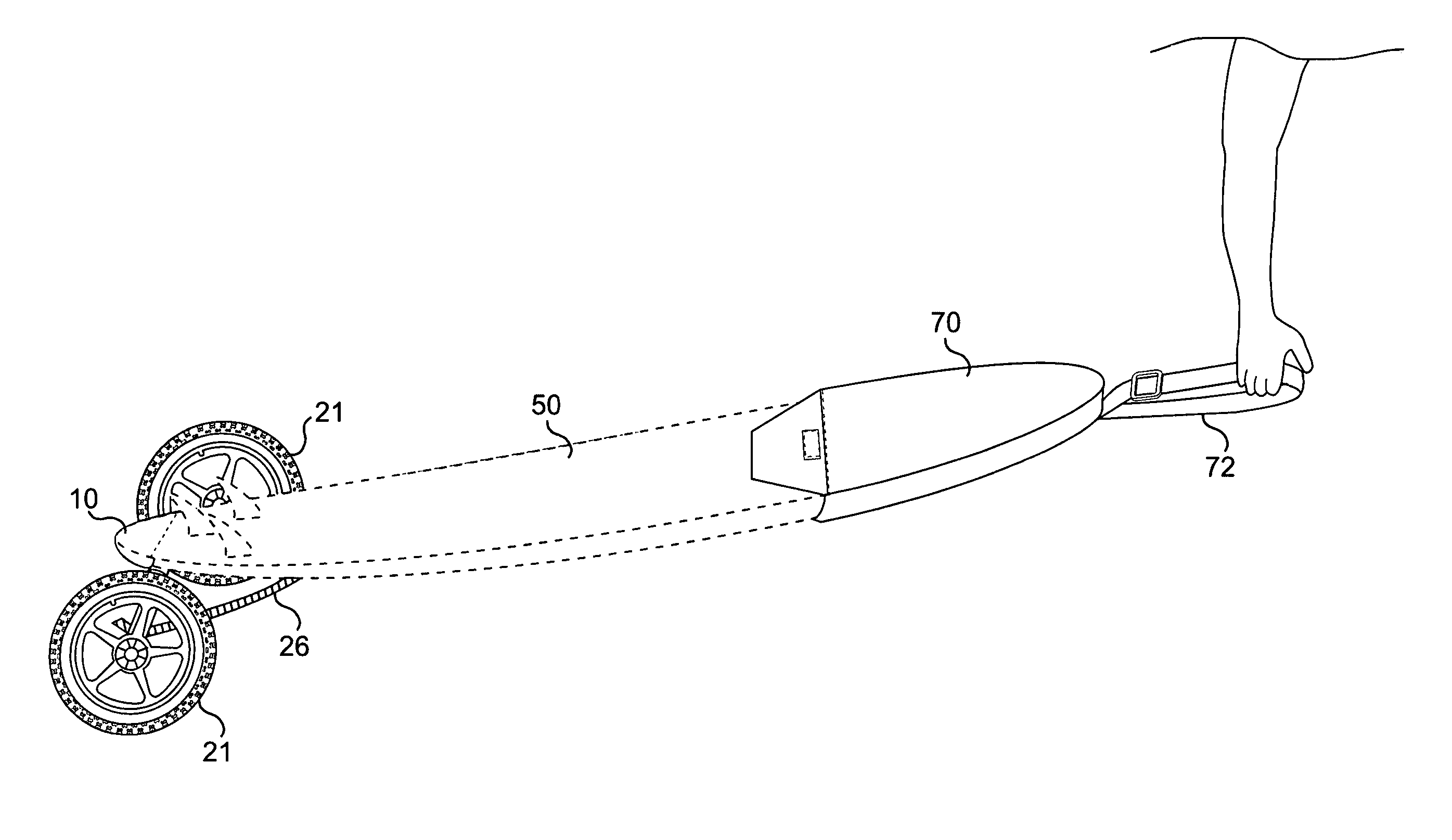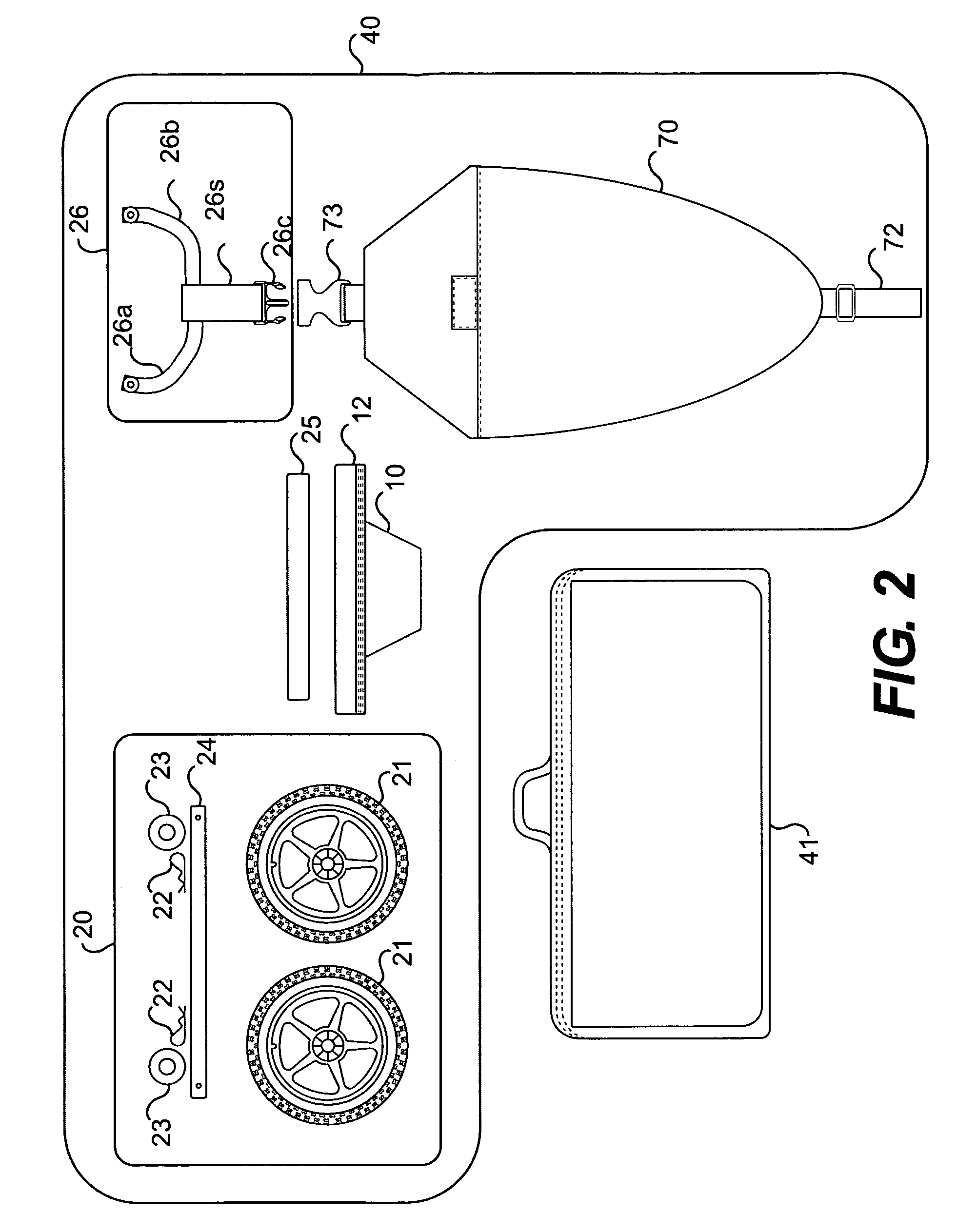Equipment transport system and kit
a technology for equipment and transportation systems, applied in the direction of transportation and packaging, transportation items, item transportation vehicles, etc., can solve the problems of difficult movement of equipment to the intended use, unsuitable for other transportation activities, and many sports use unwieldy equipment, etc., to achieve convenient assembly or disassembly, and facilitate sale and carrying
- Summary
- Abstract
- Description
- Claims
- Application Information
AI Technical Summary
Benefits of technology
Problems solved by technology
Method used
Image
Examples
Embodiment Construction
[0049]The present invention is an equipment transport system capable of being provided in kit form. The transport system is easily assembled or disassembled, to enhance portability. In various forms, the system may transport equipment by hand, towed from a vehicle (e.g., bicycle), or mounted onto an automobile roof rack. The system uses the rigidity of the transported equipment as the structure for lightweight and manageable transportation. The term rigid in reference to equipment is intended to encompass all types of equipment that are not so flexible as to sag to the ground over the course of its length during transportation. Those skilled in the art will readily see that wheel diameter or other aspects of the invention may be altered to accommodate some flexible items that might risk sagging in certain applications. Alternatively, if transportation of non-rigid equipment is desired, then the present invention may require some additional supporting structure, which will be apparen...
PUM
 Login to View More
Login to View More Abstract
Description
Claims
Application Information
 Login to View More
Login to View More - R&D
- Intellectual Property
- Life Sciences
- Materials
- Tech Scout
- Unparalleled Data Quality
- Higher Quality Content
- 60% Fewer Hallucinations
Browse by: Latest US Patents, China's latest patents, Technical Efficacy Thesaurus, Application Domain, Technology Topic, Popular Technical Reports.
© 2025 PatSnap. All rights reserved.Legal|Privacy policy|Modern Slavery Act Transparency Statement|Sitemap|About US| Contact US: help@patsnap.com



